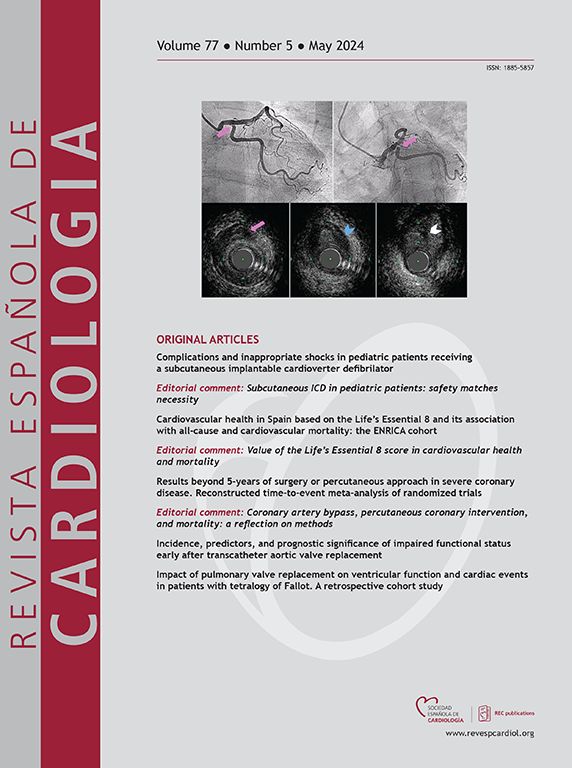钠-葡萄糖共转运体2抑制剂,胰高血糖素样肽受体1激动剂和癌症死亡率。实际实践的记录
IF 5.9
2区 医学
Q2 Medicine
引用次数: 0
摘要
钠-葡萄糖共转运蛋白2抑制剂(SGLT2i)和胰高血糖素样肽-1受体激动剂(GLP1ra)通过不同的机制减少心血管事件,但它们与癌症的关系尚不清楚。本研究的目的是比较联合治疗(SGLT2i和GLP1ra)和单药治疗(SGLT2i或GLP1ra)对普通人群和心血管疾病(CVD)患者亚组中癌症住院和/或死亡的影响。方法:我们对服用SGLT2i、GLP1ra或两者同时服用的患者进行了一项非并发观察性前瞻性研究。在整个人群和CVD患者亚组中进行多项倾向评分。采用多变量Cox回归分析确定年龄、性别、危险因素和每个结局的治疗的危险比(HR)。从治疗开始,我们纳入了14709例患者(11366例为SGLT2i, 1016例为GLP1ra, 2327例为两种治疗)。97%的患者患有糖尿病。CVD亚组包括4957例(33.7%)患者。中位随访33个月后,有和没有心血管疾病的患者发生不良癌症事件的风险相似(分别为3.4%和3.7%)。癌症死亡的主要危险因素是男性的性别和年龄。在总体人群中,与SGLT2i或GLP1ra单药治疗相比,联合治疗及其持续时间降低了癌症死亡风险(HR, 0.2216;95%置信区间,0.1106 - -0.4659;P & lt;措施;HR为0.1928;95%置信区间,0.071 - -0.5219;P = 0.001)和CVD患者亚组(HR, 0.2879;95%置信区间,0.0878 - -0.994;P & lt;.049;HR为0.1329;95%置信区间,0.024 - -0.6768;P = 0.014)。结论:联合治疗(SGLT2i和GLP1ra)与单药治疗(SGLT2i或GLP1ra)与癌症死亡风险较低相关,主要发生在伴有或不伴有CVD的糖尿病患者中。虽然还需要临床试验,但这些结果可以用这些药物的互补机制来解释,包括它们的抗增殖、抗炎和代谢作用。未来的临床试验和机制研究将阐明这些药物在癌变中的可能作用。本文章由计算机程序翻译,如有差异,请以英文原文为准。
Inhibidores del cotransportador 2 de sodio-glucosa, agonistas del receptor de péptido 1 similar al glucagón y mortalidad por cáncer. Registro de la práctica real
Introduction and objectives
Sodium-glucose cotransporter 2 inhibitors (SGLT2i) and glucagon-like peptide-1 receptor agonists (GLP1ra) reduce cardiovascular events through different mechanisms, but their association with cancer remains unclear. The aim of this study was to compare the effect of combined treatment (SGLT2i and GLP1ra) and monotherapy (SGLT2i or GLP1ra) on hospitalization and/or death from cancer in a general population and a subgroup of patients with cardiovascular disease (CVD).
Methods
We conducted a nonconcurrent observational prospective study of patients prescribed SGLT2i, GLP1ra, or both. Multinomial propensity scores were performed in the entire population and in a subgroup of patients with CVD. A multivariate Cox regression analysis was used to determine the hazard ratio (HR) for age, sex, risk factors, and treatment for each outcome.
Results
We included 14 709 patients (11366 with SGLT2i, 1016 with GLP1ra, and 2327 with both treatments) from treatment initiation. Diabetes was present in 97% of the patients. The subgroup with CVD included 4957 (33.7%) patients. After a median of 33 months of follow-up, the risk of adverse cancer events was similar between patients with and without CVD (3.4% or 3.7%, respectively). The main risk factors for cancer mortality were male sex and age. Combined treatment and its duration reduced the risk of cancer mortality compared with monotherapy with SGLT2i or GLP1ra in the overall population (HR, 0.2216; 95%CI, 0.1106-0.4659; P < .001; and HR, 0.1928; 95%CI, 0.071-0.5219; P = .001, respectively) and in the subgroup of patients with CVD (HR, 0.2879; 95%CI, 0.0878-0.994; P < .049; and HR, 0.1329; 95%CI, 0.024-0.6768; P = .014, respectively).
Conclusions
Initiation of combined therapy (SGLT2i and GLP1ra) vs monotherapy with SGLT2i or GLP1ra was associated with a lower risk of cancer mortality, mostly in diabetic patients with or without CVD. Although clinical trials are needed, these results might be explained by the complementary mechanisms of these drugs, including their antiproliferative, anti-inflammatory, and metabolic effects. Future clinical trials and mechanistic studies will clarify the possible role of these drugs in carcinogenesis.
求助全文
通过发布文献求助,成功后即可免费获取论文全文。
去求助
来源期刊

Revista espanola de cardiologia
医学-心血管系统
CiteScore
4.20
自引率
13.60%
发文量
257
审稿时长
28 days
期刊介绍:
Revista Española de Cardiología, Revista bilingüe científica internacional, dedicada a las enfermedades cardiovasculares, es la publicación oficial de la Sociedad Española de Cardiología.
 求助内容:
求助内容: 应助结果提醒方式:
应助结果提醒方式:


